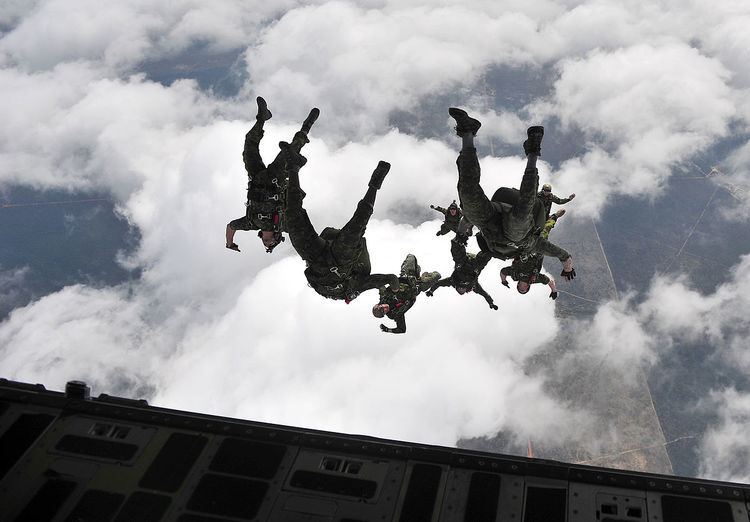Active 2006–present | Country Canada | |
 | ||
Type Special Operations Light Infantry | ||
The Canadian Special Operations Regiment (CSOR; French: Régiment d'opérations spéciales du Canada, ROSC) is a highly trained, mobile, special forces unit. The mission of CSOR is two-fold: to provide back-up to Joint Task Force 2 (JTF2), the Canadian Forces' (CF) main special operating forces (SOF) unit; and to provide the CF with a SOF unit that can be deployed anywhere in Canada or internationally. CSOR is a battalion-sized, light infantry high-readiness special operations unit part of Canadian Special Operations Forces Command (CANSOFCOM). CSOR is capable of conducting and enabling a broad range of missions, including direct action (DA), Special reconnaissance (SR), counter-terrorism (CT), and defence diplomacy and military assistance (DDMA).
Contents
Unit history
The unit traces its roots to the First Special Service Force (FSSF), the Canadian-American special forces unit that was stood up in 1942 and earned the "Devil's Brigade" moniker for daring night raids on German forces at the Anzio beachhead.
In April 2005, the Canadian government's new defence policy statement was made public. It included a concept of first responders for international tasks consisting of "special forces" (such as an expanded Joint Task Force 2) supported by one of the light battalions.
This concept of operations is similar to the US Army's 75th Ranger Regiment and the Special Forces Support Group of the UK Special Forces Group who support high-level special forces units. This eventually led to the formation of the Canadian Special Operations Regiment (CSOR), although CSOR was not to be limited to a supporting role.
In the main, the Canadian Special Operations Regiment enables special operations and, specifically, JTF2; thus, JTF2 can focus on the precise tasks for which they are so well selected and trained. However, particularly in out-of-area operations, we see that the Canadian Special Operations Regiment would be the more appropriate organization to put to the task.
— Colonel Barr, commander CANSOFCOM, in Proceedings of the Standing Senate Committee on National Security and Defence, 27 November 2006.Recruiting for the new unit took place in early 2006, and the first CSOR selection course took place with approximately 175 candidates.
On 13 August 2006, an official stand-up ceremony for the Canadian Special Operations Regiment took place at the unit's home station, Canadian Forces Base (CFB) Petawawa, with approximately 250 soldiers participating. The ceremony included a skills demonstration including rappelling from helicopters, and both static and freefall parachuting. It was also announced that the second training serial of CSOR recruits would take place in early 2007.
The regiment suffered its first casualty on 24 June 2011: Master-Corporal Francis Roy died in a non-combat incident while deployed in Kandahar Province, Afghanistan.
In 2013, the unit competed in an international Special Forces Competition held in Jordan, coming in 3rd place after Chinese Special Police teams took 1st and 2nd place.
In March 2015, Sgt. Andrew Joseph Doiron became the unit's first casualty directly related to the war on terror when he was killed by friendly fire from Kurdish Forces.
Operations
The regiment has maintained a presence in Afghanistan since 2006, in support of the Canadian and coalition forces in the southern province of Kandahar. "Canadian Special Operations Forces serving in Afghanistan" (2005 and 2007) by André Gauthier were commissioned to honour members of Canadian Special Operations Regiment.
The regiment also works with international partners, and helped in the training of the Jamaican Defence Force counter-terrorism assault team and Belize's special forces, the Belize Special Assignment Group
Members of the regiment are currently serving as part of Canada's commitment to anti-ISIL operation (see: Operation Impact), serving in advisory roles, forward air-controllers and in counter-sniper/mortar roles.
Organization
While the regiment is composed of personnel from the Canadian Army, Royal Canadian Navy and Royal Canadian Air Force, it is part of the Canadian Special Operations Forces Command, a joint command responsible for providing agile, high-readiness special operations forces capable of operating across the spectrum of conflict at home and abroad. The command is composed of CSOR and 427 Special Operations Aviation Squadron (427 SOAS) in Petawawa, Joint Task Force 2 (JTF-2) near Ottawa, and the Canadian Joint Incident Response Unit (CJIRU) in Trenton. Colonel Jamie Hammond was the first commanding officer of the Canadian Special Operations Regiment, followed by Lieutenant-Colonel Greg Smith, followed by Lieutenant-Colonel John Vass. The current commanding officer is Lieutenant Colonel Steven Hunter.
Canadian Special Operations Regiment Association
The Regimental Association was Incorporated May 2016, and founded to "Provide an avenue to resources and support services, including training, social services, family education grants, emergency support services and the like. https://csorassociation.com
